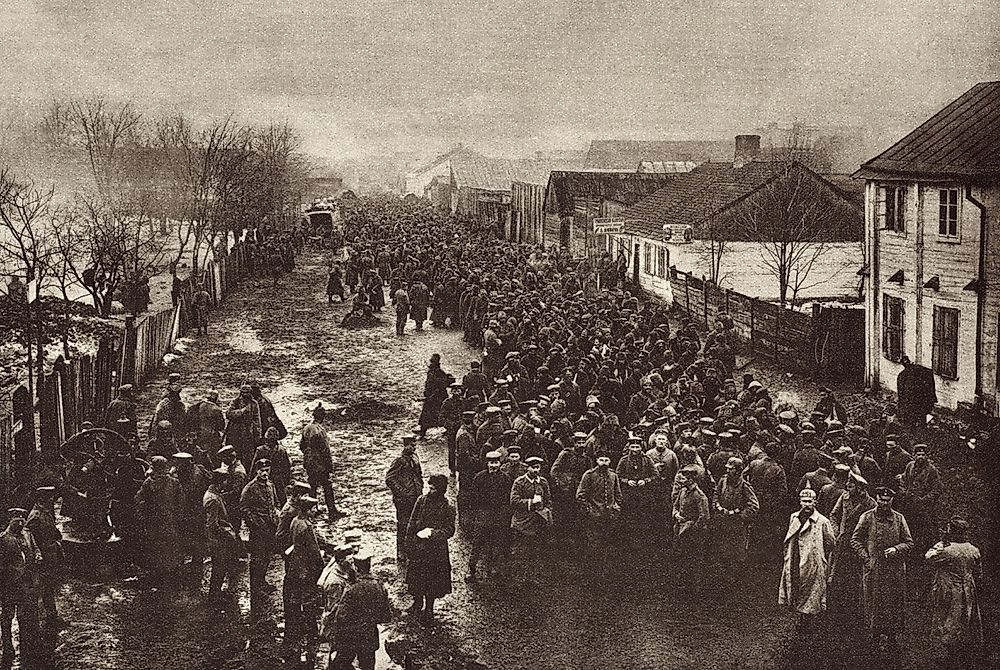


The Russian First Army was commanded by the ethnically Baltic German Paul von Rennenkampf, while the Russian Second Army was commanded by Alexander Samsonov. Shortly after the declaration of war, Russia fielded two massive armies, perhaps numbering around 200,000 men each. Its commander, the veteran general Maximilian von Prittwitz, soon showed signs of timidity, however, as Russian armies invaded East Prussia a few weeks after war was declared. The German army mobilized, swelling with reservists, and the Eight Army numbering around 160,000 men was formed in East Prussia. When war broke out in late July of 1914, the modified Schlieffen Plan went into effect. By the time World War I broke out, only two-thirds of the German army faced France, while one-third faced Russia. Ultimately, fearing that the Russians may be able to muster more men than originally thought, Moltke tinkered with the formula. In the years following the creation of the plan, Schlieffen's successor, Count Helmuth von Moltke the Younger (to distinguish him from his famous uncle, who was responsible for the Prussian victory over France in 1871), revised it significantly. Additionally, Russia's few railroads ensured that it could not get its armies to the front quickly. Most Germans, however, believed that Russia could not marshal its strength before France was knocked out of the war in the west.Ĭonventional logic held that though Russia had immense manpower reserves to draw upon, it could not easily mobilize its strength and did not possess enough weapons for its soldiers. The remaining one-fifth of the army would be positioned in East Prussia, which shared a border with Russian Poland, in order to cover Berlin. Schlieffen's plan was simple: In the event of war, the bulk of the German army, constituting four-fifths of its strength, would attack France in an attempt to capture Paris. Though allied with Austria-Hungary to its south, a hostile France and Russia flanked Germany to the west and east, while most believed that, should war break out, England would join her list of enemies. This plan recognized the perilous strategic position that Germany held in Europe. In late 1905, the German chief of the general staff, Count Alfred von Schlieffen, created a war plan that subsequently bore his name. Raging for a week, the battle was won on Aug. The forces of Imperial Germany defeated the armies of Czarist Russia at the Battle of Tannenberg, World War I's first major battle on the eastern front and one of the war's only decisive victories.


 0 kommentar(er)
0 kommentar(er)
